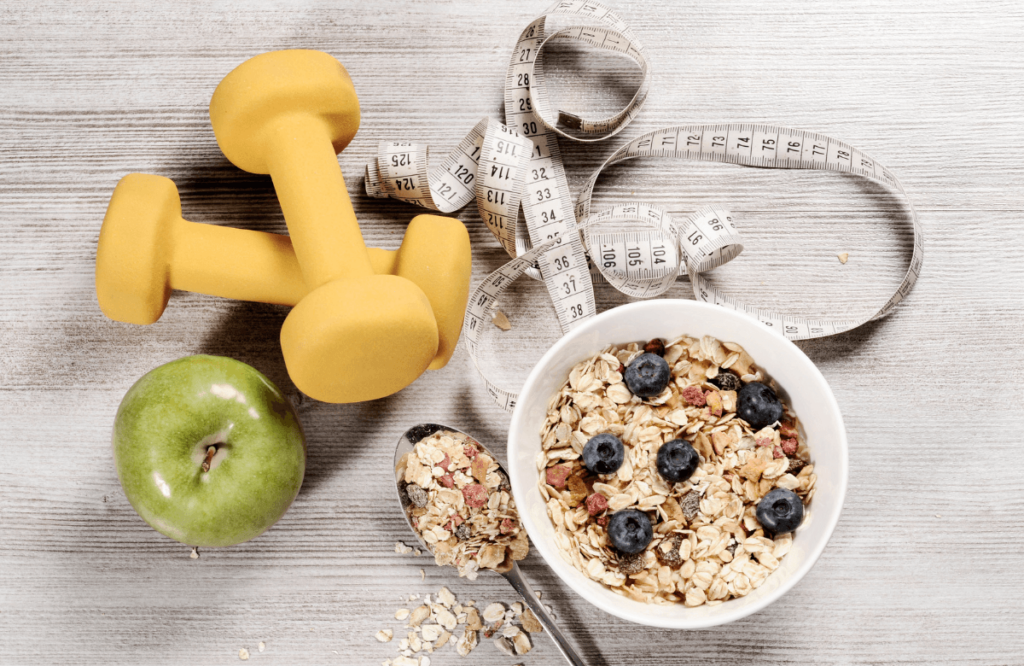Embarking on a journey towards transforming your body is a powerful commitment to your well-being and self-improvement. In a world filled with fad diets and unrealistic expectations, the path to a healthier and more confident you lies in setting attainable goals, adopting a balanced approach, and nurturing your body over time. For women seeking a realistic 6-month body transformation, understanding the nuances of the process and embracing sustainability.
Jump to:
How Much Weight Can Really Be Lost in 6 Months?
The amount of weight that can be lost in 6 months varies widely depending on individual factors such as starting weight, body composition, metabolism, genetics, age, gender, exercise routine, and overall lifestyle. A safe and sustainable rate of weight loss is generally considered to be around 1 to 2 pounds (0.45 to 0.9 kilograms) per week. This equates to approximately 4 to 8 pounds (1.8 to 3.6 kilograms) per month.
Given this rate, it’s possible to lose around 24 to 48 pounds (10.9 to 21.8 kilograms) in 6 months. However, it is important to note that weight loss is not linear, and there might be periods of faster or slower progress. Rapid weight loss, especially through extreme methods, can lead to muscle loss, nutrient deficiencies, and other health complications.
Moreover, while the number on the scale is a common measure of progress, other factors like body composition, how your clothes fit, energy levels, and overall well-being are equally important indicators of success. Sustainable changes in body composition, improved fitness levels, and a healthier lifestyle should be the primary focus of any weight loss journey.
Remember though that every individual’s body responds differently, and setting realistic and attainable goals that prioritize health and well-being over rapid weight loss is essential. Consulting with a healthcare professional, personal trainer, or a registered dietitian before embarking on any weight loss journey can provide personalized guidance and help ensure your approach is safe and effective.
Is 6 Months Enough for a Female Body Recompositioning?
A 6-month timeframe can provide a solid foundation for a female body recomposition, where the goal is to simultaneously reduce body fat while building lean muscle mass. The extent of changes achieved during this period will depend on factors such as your starting point, nutrition, training, genetics, consistency, and recovery. While visible changes in terms of muscle definition and some fat loss can be noticeable, especially if you’re new to strength training or have excess body fat, achieving significant transformations in both muscle gain and fat loss might be limited within this timeframe. It’s important to approach this journey with realistic expectations and consider the 6 months as a starting point for ongoing improvements. Consulting with professionals can provide tailored guidance to optimize your body recomposition efforts.

How To Create Your Own 6-Month Full Body Transformation Plan
Creating your own 6-month full body transformation plan involves a thoughtful and holistic approach. Here’s a breakdown of each step:
1. Set Realistic Goals
Determine your specific goals for the transformation. Whether it’s losing a certain amount of weight, building muscle, improving fitness levels, or enhancing overall well-being, make sure your goals are achievable and tailored to your starting point and lifestyle.
2. Nutrition: Eat for Nourishment
Focus on a balanced and sustainable diet. Prioritize whole foods like lean proteins, complex carbohydrates, healthy fats, and plenty of fruits and vegetables. Calculate your caloric needs based on your goals and ensure a moderate calorie deficit or surplus, depending on whether you’re aiming for fat loss or muscle gain.
3. Exercise: Find What You Enjoy
Incorporate a variety of physical activities that you genuinely enjoy. This could include cardiovascular exercises like jogging, cycling, or dancing, as well as strength training and flexibility work. Consistency is key, so aim for a mix of activities that keep you engaged.
4. Strength Training: Shape and Define
Include strength training in your plan to build lean muscle mass and boost metabolism. Focus on compound exercises that target multiple muscle groups, and gradually increase the weight or resistance over time. Aim for 2-3 strength training sessions per week, targeting different muscle groups each time.
5. Rest and Recovery: Prioritize Self-Care
Ensure you’re getting enough sleep (7-9 hours per night) to support recovery and overall health. Incorporate rest days into your routine and engage in activities like stretching and foam rolling to prevent injuries and aid muscle recovery. Stay hydrated and manage stress through relaxation techniques.
6. Mindset and Consistency
Cultivate a positive and patient mindset. Celebrate small victories and stay motivated by focusing on the progress you’re making rather than solely on the end goal. Consistency is crucial, so stick to your nutrition and workout plan even when faced with challenges. Surround yourself with a support system to help you stay accountable.

6-Month Nutrition Plan
Here’s a sample 6-month nutrition plan for females looking to change their body composition through a healthy diet for increased muscle and mental health. Remember, this plan is just a general guideline and should be tailored to individual preferences, dietary restrictions, and goals.
Month 1-2: Establishing Foundations
Note: The following plan assumes a daily calorie intake of around 1,800-2,000 calories. Adjust according to your individual needs.
Breakfast:
- Scrambled eggs with spinach and tomatoes
- Whole grain toast
- Berries
Lunch:
- Grilled chicken salad with mixed greens, cucumbers, bell peppers, and a light vinaigrette
- Quinoa on the side
Snack:
- Greek yogurt with a handful of almonds
Dinner:
- Baked salmon with roasted sweet potatoes and steamed broccoli
Month 3-4: Progressing and Refining
Breakfast:
- Oatmeal topped with sliced bananas, chia seeds, and a drizzle of honey
Lunch:
- Turkey and avocado wrap with whole grain tortilla
- Baby carrots and hummus on the side
Snack:
- Apple slices with peanut butter
Dinner:
- Stir-fried tofu with mixed vegetables and brown rice
Month 5-6: Advanced Nutrition
Breakfast:
- Smoothie with spinach, berries, protein powder, almond milk, and a tablespoon of flaxseeds
Lunch:
- Lentil and vegetable soup
- Whole grain roll
Snack:
- Cottage cheese with sliced peaches
Dinner:
- Grilled lean steak with asparagus and quinoa
Nutrition Tips:
- Protein Intake: Prioritize lean protein sources such as poultry, fish, tofu, legumes, and low-fat dairy to support muscle growth and repair.
- Carbohydrates: Choose complex carbohydrates like whole grains, quinoa, brown rice, and vegetables for sustained energy levels.
- Healthy Fats: Incorporate sources of healthy fats such as avocados, nuts, seeds, and olive oil for overall health and satiety.
- Portion Control: Pay attention to portion sizes to avoid overeating. Use your hand as a rough guide: a palm-sized portion of protein, a fist-sized portion of carbs, a thumb-sized portion of fats, and as many veggies as you’d like.
- Hydration: Drink plenty of water throughout the day to stay hydrated and support bodily functions.
- Meal Timing: Aim for balanced meals every 3-4 hours to maintain stable energy levels and support metabolism.
- Flexibility: While the plan offers structure, allow yourself flexibility for special occasions and occasional treats to maintain a sustainable approach.
Now, remember that individual needs vary from person to person, and this plan may require adjustments based on your specific circumstances. Consulting with a registered dietitian can help tailor a nutrition plan to your goals, preferences, and any unique considerations.















